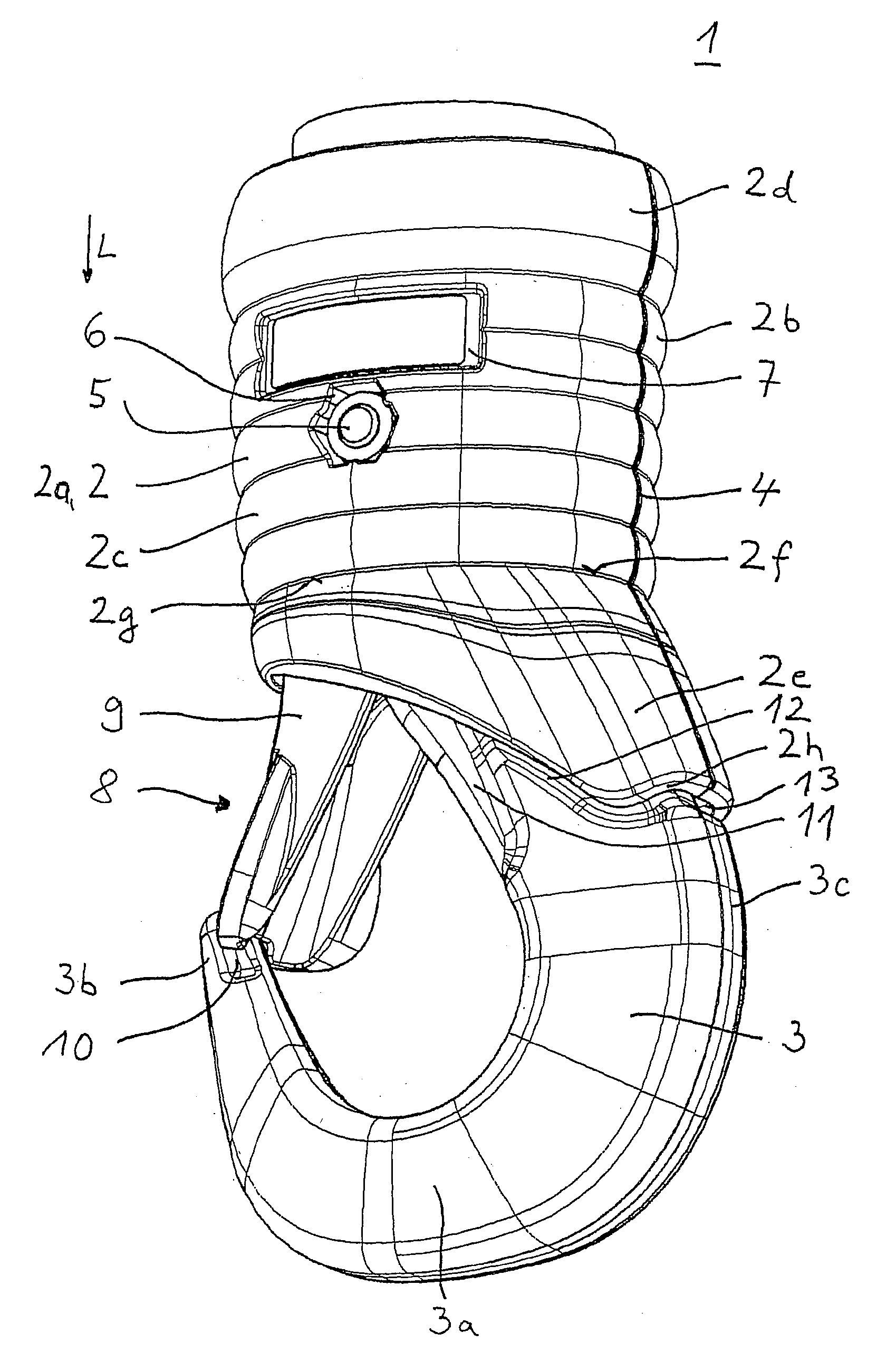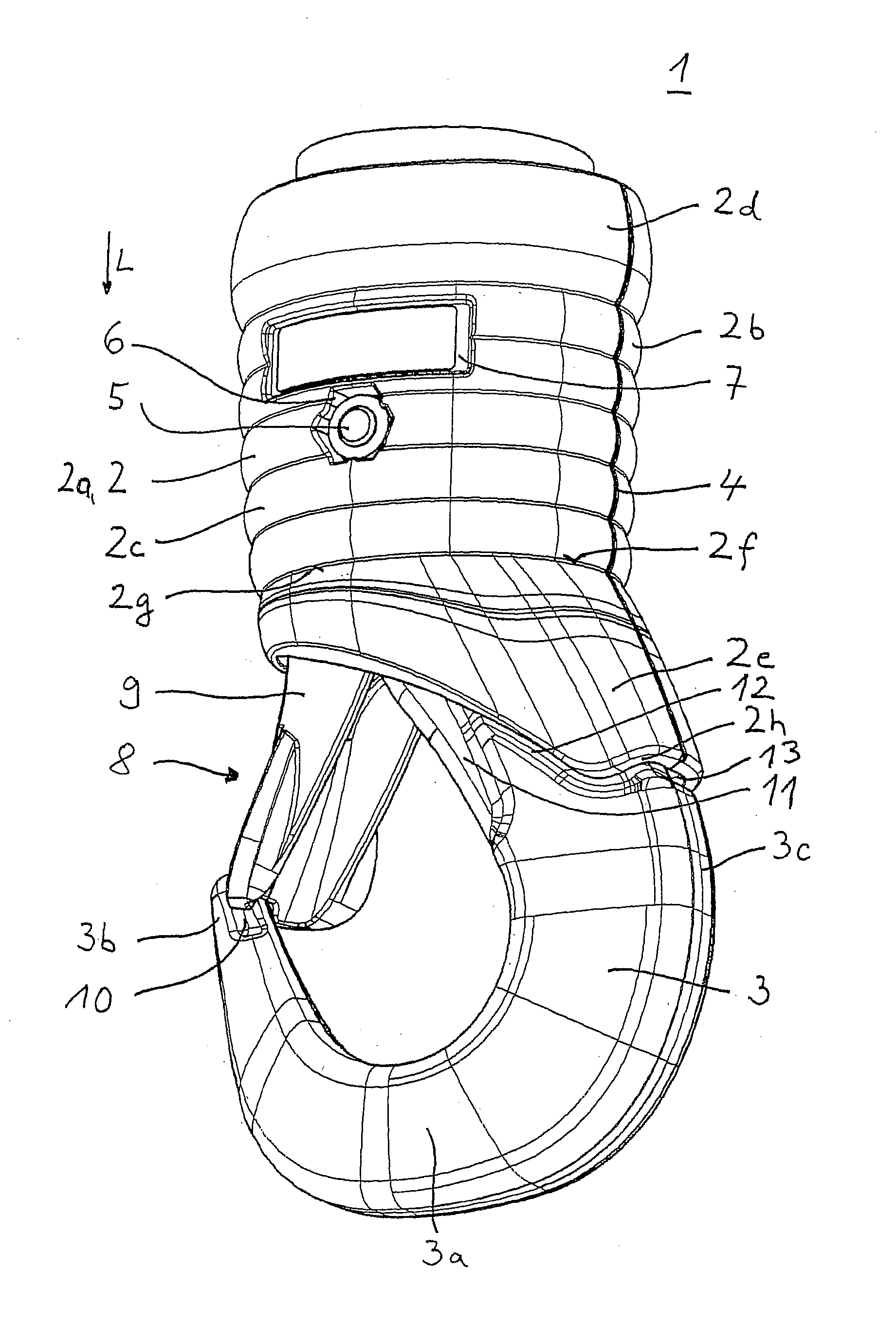Load hook
a technology of load hooks and hooks, applied in the field of load hooks, can solve the problems of neither easy catchment or sticking of the load hook, and achieve the effect of less risk of injury
- Summary
- Abstract
- Description
- Claims
- Application Information
AI Technical Summary
Benefits of technology
Problems solved by technology
Method used
Image
Examples
Embodiment Construction
[0015] The load hook 1 comprises a hook tackle 2 and a hook 3. The hook tackle 2 here has the usual function of a connection element, in order to suspend the hook 3 from a chain or cable (not shown). A design for a chain shall be assumed. The hook tackle 2 also has a housing function, making it possible to accommodate and enclose the ends of the hook 3 and of the chain, facing each other.
[0016] In the present embodiment of the load hook 1, the hook tackle 2 is divided in the lengthwise direction L of the load hook 1, i.e., in the vertical direction for a load hook 1 hanging freely from a chain, into a first half 2a and a second half 2b. The partition occurs in the middle, so that the halves 2a and 2b are basically the same size. Furthermore, the halves 2a and 2b each have generally flat parting planes 4, and when assembled together they complement each other to form a barrel-shaped or cylindrical body. In addition, the hook tackle 2 is provided with a contoured grasping region 2c o...
PUM
 Login to View More
Login to View More Abstract
Description
Claims
Application Information
 Login to View More
Login to View More - R&D
- Intellectual Property
- Life Sciences
- Materials
- Tech Scout
- Unparalleled Data Quality
- Higher Quality Content
- 60% Fewer Hallucinations
Browse by: Latest US Patents, China's latest patents, Technical Efficacy Thesaurus, Application Domain, Technology Topic, Popular Technical Reports.
© 2025 PatSnap. All rights reserved.Legal|Privacy policy|Modern Slavery Act Transparency Statement|Sitemap|About US| Contact US: help@patsnap.com


